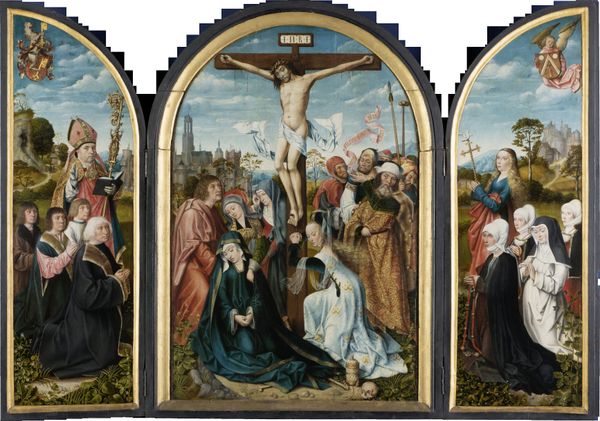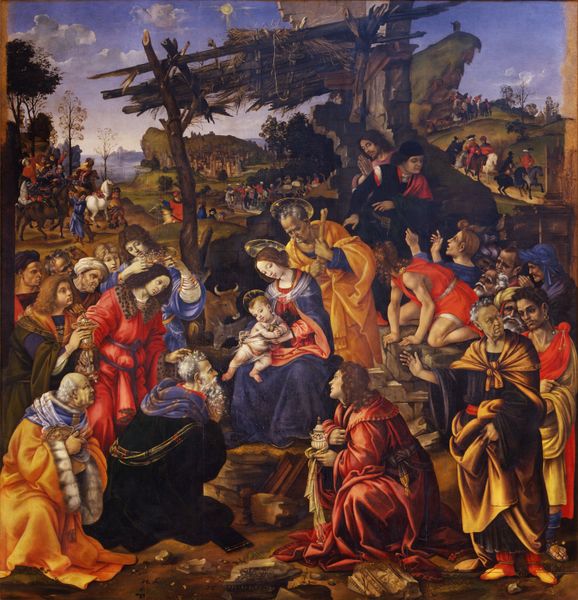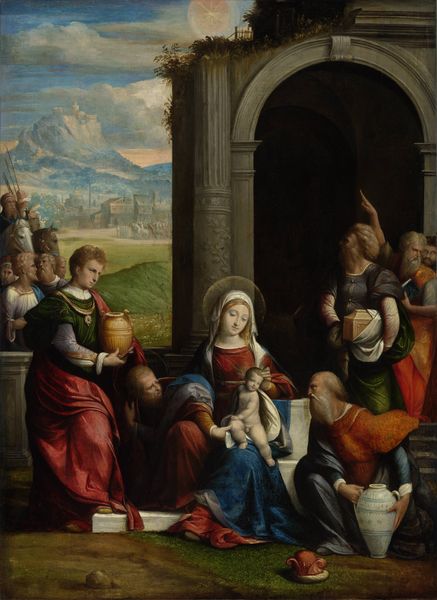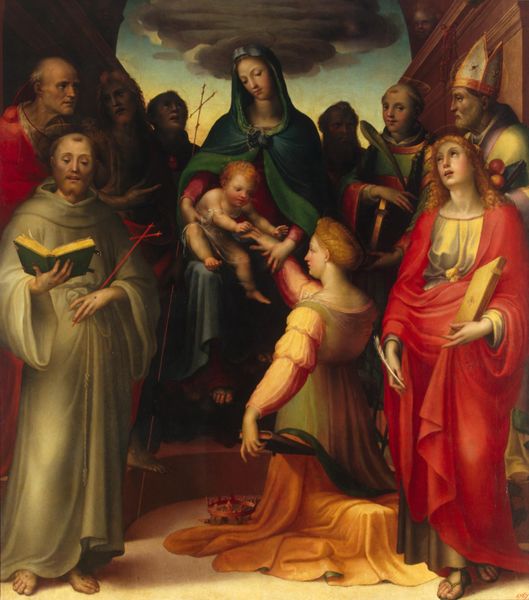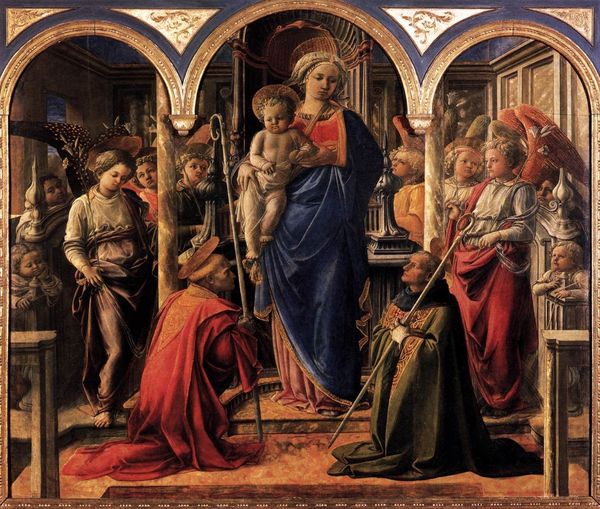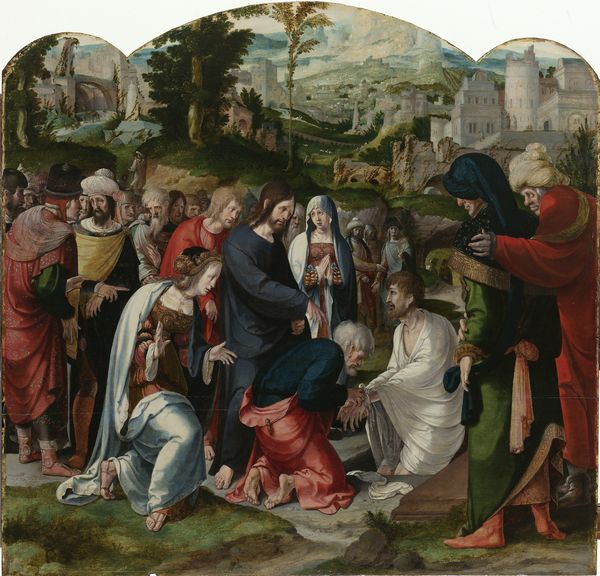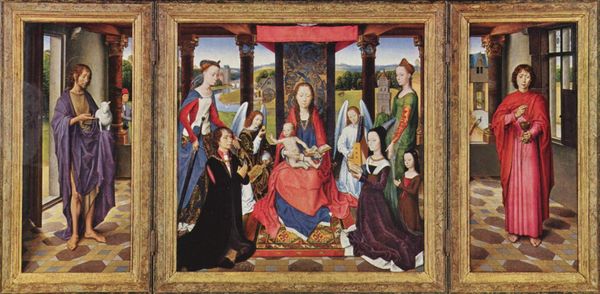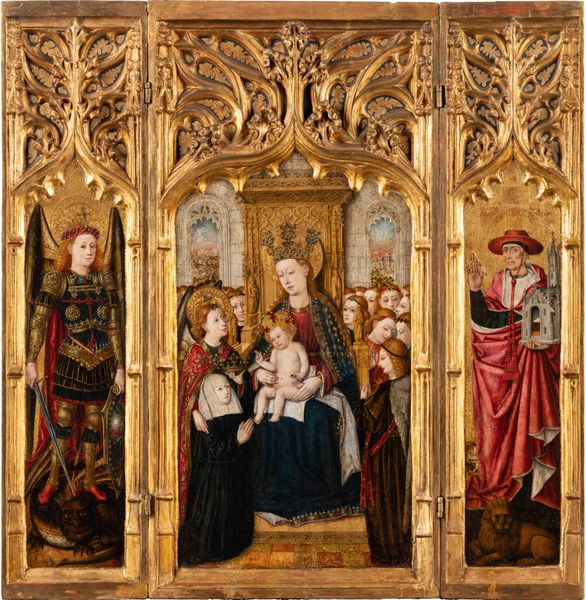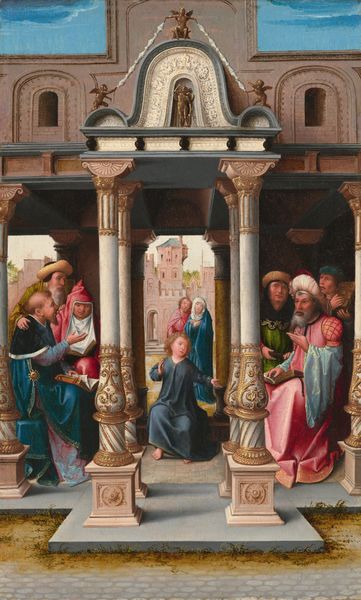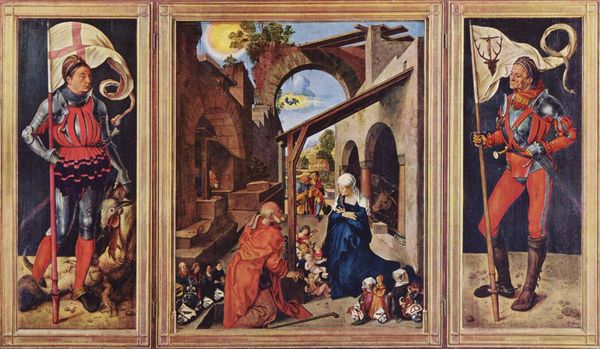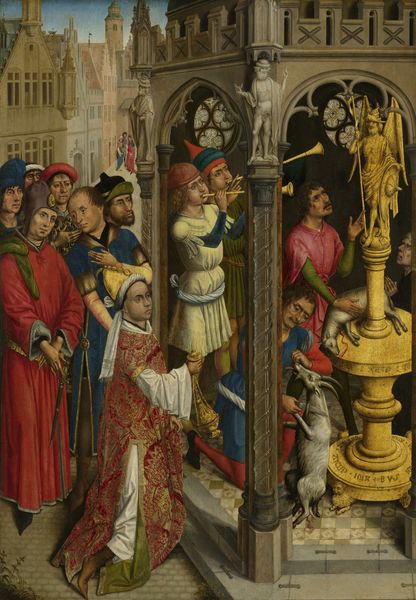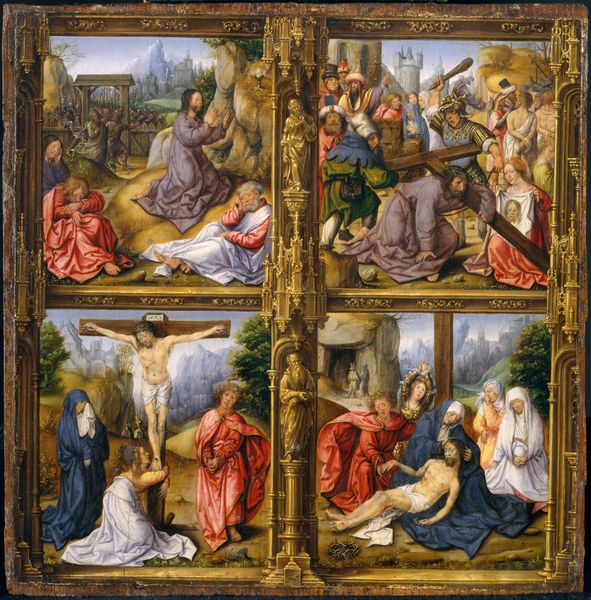
painting, oil-paint, fresco
#
portrait
#
high-renaissance
#
allegory
#
narrative-art
#
painting
#
oil-paint
#
painted
#
figuration
#
fresco
#
oil painting
#
classicism
#
christianity
#
mythology
#
history-painting
#
italian-renaissance
Dimensions: 161.8 x 177.2 cm
Copyright: Public domain
Editor: This is Mabuse’s "The Adoration of the Kings" from 1515, an oil painting currently housed at the National Gallery in London. It’s such a detailed, vibrant depiction. What strikes me is the contrast between the ruined architecture and the opulent clothing. How do you interpret this work, especially concerning its historical context? Curator: It's a fascinating juxtaposition, isn’t it? Consider the painting not just as a religious scene but as a commentary on power, race, and class during the Renaissance. Mabuse places the Holy Family within decaying structures, challenging viewers to consider the Church's role, power, and privilege relative to the figures depicted. Editor: That’s a good point. And the Black king presenting his gift—how does that play into these themes? Curator: His presence is significant. Think about how the figure challenges the established white-centric, Eurocentric view that dominated religious art and broader society. This representation highlights the universality of the Christian message and brings up considerations around race, identity and the inclusion or erasure of Black people throughout Western art history. Editor: So it's almost a subtle form of activism, a visual disruption of the status quo? Curator: Precisely. Mabuse uses familiar religious iconography to provoke a discussion about power structures and cultural representation. How do these elements function together? What assumptions might the intended audience have brought to viewing this image? These are all fair considerations. Editor: That’s really given me a new perspective. I always thought of it as a straightforward religious scene, but I see now how much more there is beneath the surface. Curator: Art often operates on multiple levels, reflecting and shaping the socio-political landscapes in which it’s created and viewed. Thinking critically allows us to connect the historical with our present. Editor: Exactly. I’ll never look at this painting the same way again! Thanks for helping me unpack all that.
Comments
No comments
Be the first to comment and join the conversation on the ultimate creative platform.
